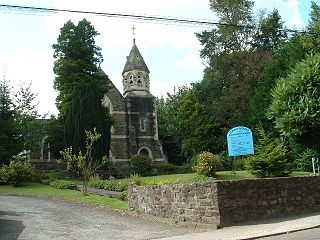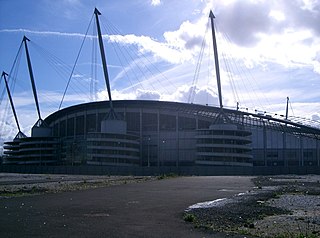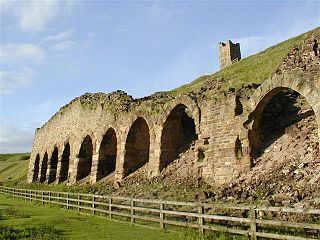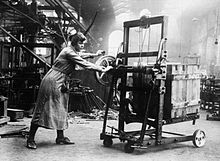
Tondu is a village in Bridgend County Borough, Wales, located about 3 miles (4.8 km) north of the town of Bridgend, in the community of Ynysawdre.

Bradford is a district of east Manchester, England, two miles north east of the city centre. The population at the 2011 census was 15,784. Historically in Lancashire, after the closure of its heavy industries Bradford was for many years an economically deprived area but has undergone regeneration with the building of the City of Manchester Stadium which hosted the 2002 Commonwealth Games and is now home to Manchester City F.C. Bradford is neighboured by Beswick to the south and the two areas are sometimes referred to as Bradford-with-Beswick. The River Medlock and the Ashton Canal run through Bradford.

East Bowling is an area of Bradford, West Yorkshire, England located to the south of Bradford city centre. It forms the eastern half of the historic township and manor of Bowling. Bowling became a ward of the newly created Borough of Bradford in 1847. In 1882 the ward was split into the wards of East and West Bowling. In the north the boundary was along the Lancashire and Yorkshire Railway. To the south it was along Hall Lane and Bolling Hall Lane.
Seend Ironstone Quarry and Road Cutting is a 3 acres (1.2 ha) Geological Site of Special Scientific Interest at Seend in Wiltshire, England, notified in 1965. The site contains facies of Lower Greensand containing specimens of fauna not found elsewhere.

The Adelphi Canal was a small privately owned canal in Duckmanton, near Chesterfield, England, built in 1799. It was used to transport pig iron from an ironworks to a wharf by a road. It is not connected to any waterway. The iron was forwarded by road to the Chesterfield Canal.
The British Iron Company was formed in 1824 to smelt and manufacture iron and to mine ironstone, coal, etc. It was re-formed as the New British Iron Company in 1843 and liquidated itself in 1892.
Tredegar Iron and Coal Company was an important 19th century ironworks in Tredegar, Wales, which due to its need for coke became a major developer of coal mines and particularly the Sirhowy Valley of South Wales. It is most closely associated with the Industrial Revolution and coal mining in the South Wales Valleys.

Robinson Thwaites was a nineteenth-century mechanical engineer and mill-owner in Bradford, Yorkshire. His companies included at different times Robinson Thwaites and Co, Thwaites and Carbutt and Thwaites Brothers.

The Midland Railway Ripley Branch connected Derby to Ripley in Derbyshire, England running from Little Eaton Junction on the Midland Railway line to Leeds.

Bradford Colliery was a coal mine in Bradford, Manchester, England. Although part of the Manchester Coalfield, the seams of the Bradford Coalfield correspond more closely to those of the Oldham Coalfield. The Bradford Coalfield is crossed by a number of fault lines, principally the Bradford Fault, which was reactivated by mining activity in the mid-1960s.

Losh, Wilson and Bell, later Bells, Goodman, then Bells, Lightfoot and finally Bell Brothers, was a leading Northeast England manufacturing company, founded in 1809 by the partners William Losh, Thomas Wilson, and Thomas Bell.

Broomfields is a historic district on the south eastern edge of Bradford, West Yorkshire, England. In 1840 it was still a mainly rural area with a population of only a few hundred people. By 1880 it was one of the most densely populated districts of Bradford with 1,500 houses, a population of about 8,000 and many commercial premises. In 1932 a process of slum clearance and commercial regeneration was started. Today (2014) the district is almost wholly given over to commercial premises and once again has a resident population of only about two hundred people.

Bolckow, Vaughan & Co., Ltd was an English ironmaking and mining company founded in 1864, based on the partnership since 1840 of its two founders, Henry Bolckow and John Vaughan. The firm drove the dramatic growth of Middlesbrough and the production of coal and iron in the north-east of England in the 19th century. The two founding partners had an exceptionally close working relationship which lasted until Vaughan's death.

John Marley was an English mining engineer from Darlington who together with ironmaster John Vaughan made the "commercial discovery" of the Cleveland Ironstone Formation, the basis of the wealth of their company Bolckow Vaughan and the industrial growth of Middlesbrough. He was an effective leader of engineering operations at Bolckow Vaughan's mines and collieries. He ended his career as a wealthy independent mine-owner and president of the North of England Institute of Mining and Mechanical Engineers (NEIMME).

The Low Moor Ironworks was a wrought iron foundry established in 1791 in the village of Low Moor about 3 miles (4.8 km) south of Bradford in Yorkshire, England. The works were built to exploit the high-quality iron ore and low-sulphur coal found in the area. Low Moor made wrought iron products from 1801 until 1957 for export around the world. At one time it was the largest ironworks in Yorkshire, a major complex of mines, piles of coal and ore, kilns, blast furnaces, forges and slag heaps connected by railway lines. The surrounding countryside was littered with waste, and smoke from the furnaces and machinery blackened the sky. Today Low Moor is still industrial, but the pollution has been mostly eliminated.
Boaz Bloomer JP was a prominent industrialist from Holly Hall in Dudley, Worcestershire, England, who lived between 1801 and 1874. He owned and operated the Pelsall Ironworks, among other ventures, during the 19th Century. He died in Kensington, Middlesex.

Calvert's Engine or the Newbridge Colliery Engine is a beam engine of 1845, now preserved on the campus of the University of Glamorgan, South Wales.
Morgan Morgans (1814–1888) was a civil engineer particularly involved with mining.

The Ironstone mining in Rosedale, was a major mining concern, in Rosedale, North Yorkshire, England. It flourished in the 19th century and ceased in the early 20th, though smaller scale iron workings were in use through the Middle Ages. The ironstone from Rosedale was typically rated at a higher iron ore concentration in the rock than other mines in the Cleveland and North Yorkshire area.

The industrial revolution in Wales refers to the notable developments in technology and the resultant increases in the scale of industry in Wales which took place in the 18th and 19th centuries as part of the wider Industrial Revolution.























